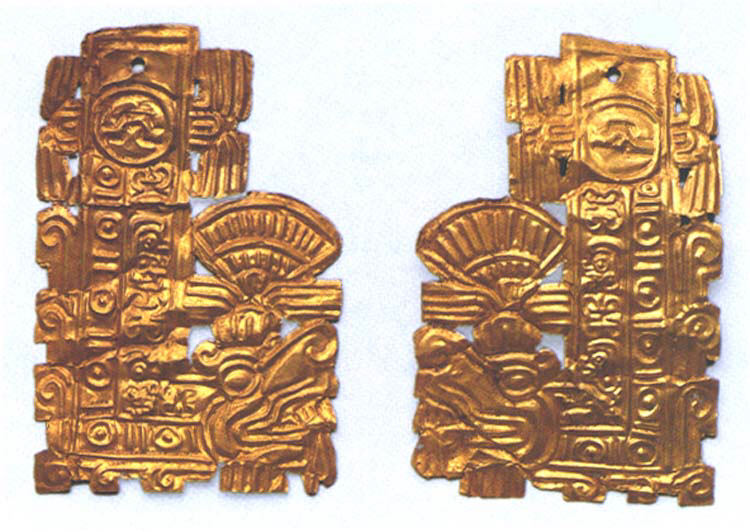|
Montezuma's Headdress
Moctezuma's headdress is a historical artifact that has been long disputed in terms of origin, patron, and function. The object's function was perhaps featherwork headdress or military device. In the Nahuatl languages, it is known as a ''quetzalāpanecayōtl'' ( ketsalaːpaneˈkajoːtɬ). Tradition holds that it belonged to Moctezuma II, the Aztec emperor at the time of the Spanish conquest. The provenance of the headdresses remains uncertain, and even its identity as a headdress has been questioned. It is made of quetzal and other feathers with sewn-on gold detailing. The object has been in private Austrian collections since the end of the sixteenth century and is now in the Weltmuseum (World Museum) in Vienna, Austria and remains an issue of dispute between Austria and Mexico, as Mexico has asked for the return of the object. Terminology In Mexico, ''Moctezuma's headdress'' is sometimes referred to as ''El Penacho de Moctezuma'' (Moctezuma's Headdress). The word “penacho” ... [...More Info...] [...Related Items...] OR: [Wikipedia] [Google] [Baidu] [Amazon] |
Museum Of Ethnology, Vienna
upright=1.35, The Weltmuseum Wien is housed in a wing of the Hofburg Imperial Palace Interior view of the museum The Weltmuseum (translating to World Museum) in Vienna is the largest anthropological museum in Austria, established in 1876. It is housed in a wing of the Hofburg Imperial Palace and holds a collection of more than 400,000 ethnographical and archaeological objects from Asia, Africa, Oceania, and America. Until 2013, it was known as the Museum of Ethnology, ). Before 1928, the Anthropological-Ethnographic Department belonged to the Natural History Museum. Collections The museum's collections comprise more than 200,000 ethnographic objects, 100,000 photographs and 146,000 printed works from all over the world. Important collections include Mexican artifacts, such as a unique Aztec feathered headdress, part of James Cook's collection of Polynesian and Northwest Coast art (purchased in 1806), numerous Benin bronzes, the collection of Charles von Hügel from Ind ... [...More Info...] [...Related Items...] OR: [Wikipedia] [Google] [Baidu] [Amazon] |
Quetzalcōātl
Quetzalcoatl () (Nahuatl: "Feathered Serpent") is a deity in Aztecs, Aztec culture and Mesoamerican literature, literature. Among the Aztecs, he was related to wind, Venus, Sun, merchants, arts, crafts, knowledge, and learning. He was also the patron god of the Aztec priesthood. He was one of several important gods in the Aztec pantheon (religion), pantheon, along with the gods Tlāloc, Tlaloc, Tezcatlipoca and Huitzilopochtli. The two other gods represented by the planet Venus are Tlaloc (ally and the god of rain) and Xolotl (psychopomp and its twin). Quetzalcoatl wears around his neck the breastplate ''ehēcacōzcatl'', "the spirally voluted wind jewel". This talisman was a conch shell cut at the cross-section and was likely worn as a necklace by religious rulers, as such objects have been discovered in burials in archaeological sites throughout Mesoamerica, and potentially symbolized patterns witnessed in hurricanes, dust devils, seashells, and whirlpools, which were elementa ... [...More Info...] [...Related Items...] OR: [Wikipedia] [Google] [Baidu] [Amazon] |

